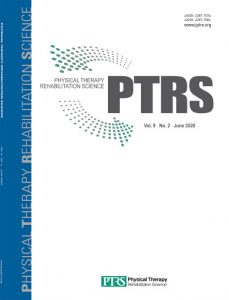Publications

Is Muscle Mass Enough? Rethinking Physical Assessment Priorities in Community-Dwelling Older Adults
Authors: Wanjin Shin 1, Geumcheol Shin 1, Gyeonghee Ju 1, Hyunhee Park 1, Jeonghee Jeong 1, Juhyeok Hong 1, Miae Im 1, Sunyoung Song 1, Yeonhee Kim 1, Jongshin Park 1, Hyunjoong Kim 1, 2
Affiliations:
- Department of Senior Exercise Prescription, Gwangju Health University, Gwangju, Republic of Korea
- Department of Physical Therapy, Gwangju Health University, Gwangju, Republic of Korea
Journal: Physical Therapy Rehabilitation Science - September 2025, Volume 14, Pages 389-400 (DOI: 10.14474/ptrs.2025.14.3.389)
-
Field & Applications:
- Medical
- Gerontology / Ageing
- Musculoskeletal health
- Neuromuscular control
- Muscle symmetry
- The integration of muscle quality assessment using objective equipment such as MyotonPRO represents a significant advancement suitable for routine clinical application due to its high reliability and non-invasive characteristics.
Objective: Current geriatric assessments emphasize muscle mass; however, its relationship with functional performance in community-dwelling older people remains unclear. This study examined whether muscle mass alone sufficiently predicts physical function and aimed to identify complementary assessment parameters.
Design: Cross-sectional study following Strengthening the Reporting of Observational Studies in Epidemiology guidelines.
Methods: Forty-nine people aged ≥65 years were enrolled. Body composition was assessed using bioelectrical impedance measurements. Physical performance included handgrip strength, muscle tone and stiffness, balance via single-leg stance, and the Short Physical Performance Battery (SPPB). Sarcopenia, cognitive decline, and frailty were assessed using the Physical performance was assessed through measures of muscle strength, muscle tone, balance, and overall functional performance. Sarcopenia, cognitive decline, and frailty were evaluated using standardized questionnaires. Pearson’s correlations and group comparisons were performed.
Results: Muscle mass and functional performance were not associated. The skeletal muscle index was strongly correlated with handgrip strength (r=0.584, p<0.001) but not with balance. Body mass index was positively correlated with handgrip strength (r=0.370, p<0.01) and negatively with balance (r=-0.438, p<0.01). Visceral fat area independently predicted frailty (r=0.436, p<0.01). The vastus medialis oblique to vastus lateralis tone ratios had strong bilateral correlations (r=0.817–0.929, p<0.001), suggesting that neuromuscular symmetry was preserved despite aging.
Conclusions: Muscle mass alone is insufficient for evaluating the physical health of older people. Comprehensive assessments that incorporate balance, body composition, and muscle quality parameters can provide more accurate insights into functional capacity. These findings highlight the requirementfor multidimensional evaluation strategies to guide geriatric health-management practices.
Keywords: mass, physical function, elderly assessment, body composition, frailty, balance performance
This study demonstrates that muscle mass measurements alone are insufficient for comprehensive physical health assessment in community-dwelling older adults. The observed muscle mass-function dissociation challenges traditional assessment paradigms and supports the need for multi-parameter evaluation approaches. These findings suggest that clinical assessment protocols may benefit from incorporating multiple assessment domains, including balance testing, body composition analysis, and muscle quality evaluation alongside traditional muscle mass metrics. Further research with larger, more diverse samples is needed to establish evidence-based guidelines. This comprehensive approach would provide more complete information for predicting functional outcomes, identifying individuals at risk for adverse events, and guiding targeted intervention strategies to maintain independence and quality of life in aging populations.


